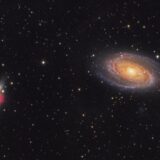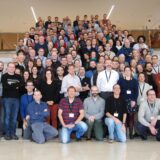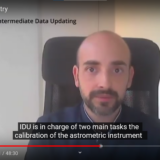Cloud computing to unveil the mysteries of our galaxy
The Galactic RainCloudS project, an initiative led by members of the Faculty of Physics, the Institute of Cosmos Sciences (ICCUB) of the UB and the Institute for Space Studies of Catalonia (IEEC), was awarded the first position in the framework of the Cloud Funding for Research call of the European project Open Clouds For Research Environments (OCRE). The project competed against 27 proposals from twelve countries in a wide range of research disciplines. This first edition of Cloud Funding For Research funds the use of commercial computational cloud resources for research. The project counts...
read moreNew Gaia DR3 catalogue publication
Many events are organised to introduce the Gaia Data Release 3 to the community. The central ESA/Gaia/DPAC press event will be streamed on ESA WebTV at 10:00 CEST (in English). Then, “Scientific and technical presentations on Gaia DR3” will be livestreamed from ESAC ESA Live youtube at 11:00 CEST, including the opening of the Archive at 12:00 CEST (in English). At 16:30 CEST, the Spanish Network of Gaia (REG) organises the Colloquium on the Gaia Data Release 3 that will be streamed live. More information here At 19:00 CEST, an outreach talk for general public also in Spanish at...
read moreConstellations in 3D
Eduard Masana, lecturer at the Physics Faculty and researcher of the Gaia group of the Institute of Cosmos Sciences of the University of Barcelona (ICCUB), explains how the perspective changes the way we see the stars in the sky, and how not all the stars are at the same distances, but they could be very far from each other. Using Orion as an example, this video guides us to build the constellation in 3-D. This activity was organised by the “VI Festa de la Ciència de la Universitat de Barcelona” in virtual version with the aim to keep the connection between research and society,...
read moreTeresa Antoja en El País (in Spanish)
You can see the full article here: La científica española que busca los secretos de la Vía Láctea desde niña
read moreJavier Castañeda explains Gaia IDU @CU3 Meeting
Following the last CU3 plenary meeting, interviews were held by Prof. Stefan Jordan with several of the CU3 managers: Dr. Michael Biermann, Prof. Lennart Lindegren, José Hernández, Dr. Javier Castañeda Pons, Prof. Sergei Klioner, and Dr. Katja Weingrill. They explain the contribution of CU3 to the Gaia mission. The videos can be seen in two versions (short 20 minutes and the longer, 50 mins) here: https://www.cosmos.esa.int/web/gaia/iow_20210623 The Gaia data releases contain a wealth of astrophysical data on about 1.8 billion stars in our Milky Way and beyond. The creation of these data...
read more









